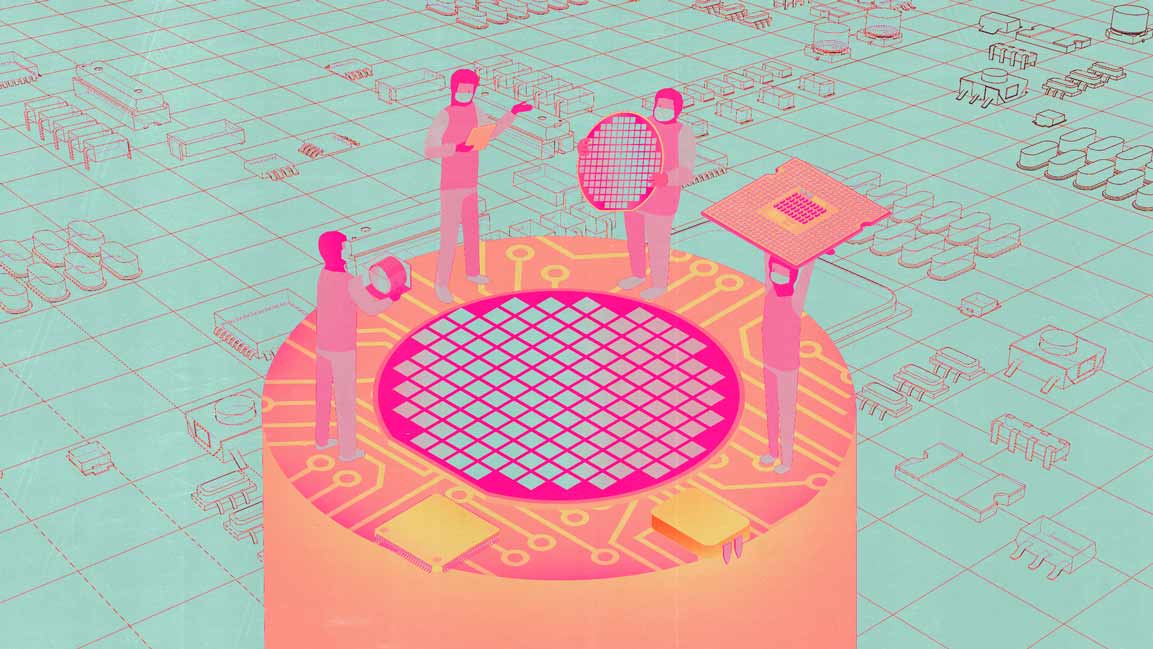Why AI and Chips Are Now Core to India’s Security
The next leap in AI may come not from costlier chips, but from India’s ability to make it run on simpler ones.
Topics
News
- Google Unveils Nano Banana Pro With Sharper Text, Smarter Visuals
- Palo Alto Networks Buys Chronosphere in $3.35 Billion AI Bet
- Huang Shrugs Off Bubble Fears, Says AI Has Shifted Into Full-Scale Deployment
- Bengaluru Moves Ahead of 2024 Benchmarks in Innovation Review
- Cloudflare’s Worst Outage Since 2019 Disrupts Global Internet
- India Rolls Out Digital Platforms to Modernize Grain Distribution

As the global technology race intensifies, India finds itself at a critical juncture, where technologies such as AI, semiconductors, and quantum computing are no longer just enablers of economic growth but also vital pillars of national security.
In an exclusive interview with MIT SMR India, Anshuman Tripathi, former member of India’s National Security Advisory Board (NSAB), shared deep insights into how India should shape its strategy in this fast-evolving landscape.
“AI has become quite the buzzword today. Everyone wants to apply it everywhere. But over time, we’ll see where it truly makes an impact and, more importantly, where it makes business sense, and is economically viable,” said Tripathi.
Citing the example of autonomous vehicles, he noted that while they are technologically feasible, in India, affordability and employment structures (like the widespread use of chauffeurs) challenge their viability. “What happens to the many people who currently earn their living as drivers?” he asked, hinting at the social cost of chasing tech hype.
Yet, AI has found compelling use cases in sectors such as defense. Tripathi explained that AI is being deployed in drones for tasks like image recognition, target identification, and surveillance. Essentially, AI thrives where there is access to large volumes of data for model training, and the country is actively looking to leverage such possibilities.
Building AI in the Indian Context
India must take a pragmatic approach to AI. Tripathi suggested that the country has a significant opportunity to shape the future of AI hardware as well, especially since the current AI infrastructure, dominated by NVIDIA and proprietary hardware, may not remain so for long.
“If you look at the trajectory of most technologies, they typically begin as proprietary innovations and eventually evolve into open-source, affordable solutions,” he said.
In the future, the country will see software solutions optimized to run on simpler, less proprietary hardware, not necessarily as specialized as NVIDIA’s, yet still capable of delivering comparable performance at a much lower cost.
This shift, he believes, is where India can play a critical role, contributing to both the development and deployment of cost-effective AI technologies for the world.
AI Governance: Balancing Innovation and Threats
Tripathi pointed to the mounting risks posed by deepfake technologies and misinformation. “Deepfake, in particular, is a major global challenge,” he warned.
However, he is optimistic about the community-led efforts emerging to address these risks. Many solutions being explored are open-source, and there is a strong push for crowd-sourced efforts to combat this.
Tripathi also highlighted India’s track record of responsible digital behavior. “Unlike some neighboring countries, which have even showcased video game footage on official platforms as real warfare, we steer clear of such practices. India holds itself to a higher standard in this space,” he said.
Semiconductor Self-Reliance: Strategic and Economic
Turning to semiconductors, Tripathi makes it clear: India’s chip ambitions are both a geo-economic goal and a national security imperative.
“Semiconductor manufacturing is fundamentally a high-volume game. While India is a large nation with significant consumption capacity, the economics become far more favorable when we produce at scale, not just for ourselves, but for the global market,” he explained.
Quoting the Prime Minister’s call to “Make in India for the world,” Tripathi emphasized that global competitiveness and domestic security are two sides of the same coin.
Yet, challenges remain, particularly in chip fabrication, a domain still dominated by a handful of global players. “We have the talent. There’s hardly a chip in the world that doesn’t bear the imprint of an Indian engineer. But our major gap lies in fabrication technology,” he said.
The way forward is strategic collaboration. He advised that the country must leverage its strengths, especially the talent pool and market potential, to build mutually beneficial partnerships.
A Strategic Role in Global Tech Corridors
As global supply chains bifurcate, especially between the US and China, Tripathi sees India’s role as pivotal. “The US is restricting China’s access to high-tech technologies, and in response, China is tightening its grip on raw material supplies. In this scenario, India has a significant role to play,” he asserted.
Highlighting gallium, a key material in electronics and EVs, as an example, he mentioned that global players are already looking at India as a potential source for it. From a technology standpoint, if China is being edged out, someone has to step in, and India offers a fertile ground to emerge as that alternative.
The Next Decade: India at the Helm
Tripathi envisions the next 10 years as a defining era for Indian talent and technology. “India is a vast and diverse country, comparable in many ways to Europe. Indian engineers are not only developing technologies domestically but also playing a key role in advancing them globally,” he said.
He pointed out that Indian engineers are disproportionately represented in top innovation hubs around the world. The number of top-performing Indian students alone sometimes exceeds the total number of engineering graduates in certain US schools. Whether based in India or abroad, Indian engineers are deeply involved in shaping the future.
From AI governance and semiconductor self-sufficiency, to global supply chain realignment and deep tech collaborations, India’s message is clear: the country’s moment is now. But seizing it will require strategic foresight, international partnerships, and a commitment to building inclusive innovation that secures both prosperity and national interest.




